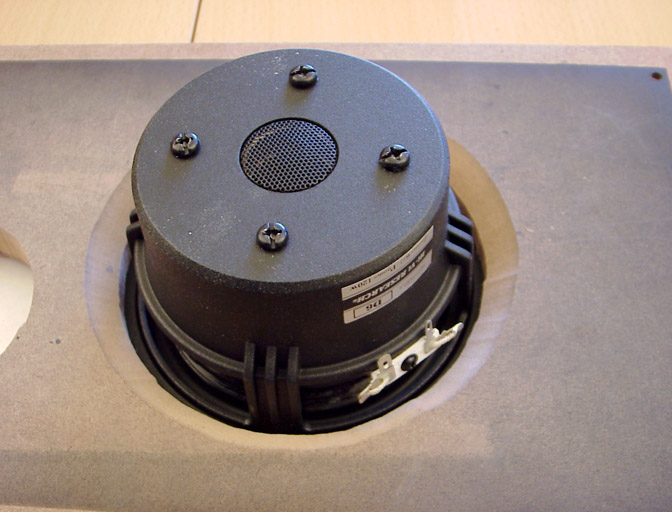Hello all, and thank you to everyone here for the knowledge you share. I'm going to be building a version of Jed's dynamic 4T design with the help of Jed and a very reasonable local machinist ($35/hr) I've found here in Roseville, CA.
I'm trying to take advantage of any benefits offered by the "Easy Button" of CNC routing, so I've incorporated roundover edges on all the bracing, a little extra bracing, and dadoed grooves in the cabinet for the bracing.
I'm using 1.25" MDF for the front baffle, and 1" for the rest. I'm skimping a little on the baffle by not going 1.5", but I added a little extra bracing, spaced the woofers a little more, and got some extra strength that way. I was thinking of doing rabbeted joints for this project, but it seems to me that butt joints are the way to go here as I'll be using 3/4" hardwood trim on all edges and if I do anything but a butt joint I'll be cutting away at the glue when I go to do the 3/4" rabbett.
I started thinking about dowels to help me line up the panels, then got to thinking about whether they could provide any added joint strength. The little research I did indicated that in a 3/4" MDF cabinet build, 96mm spacing between dowels would be optimal, and to stay away from the corners.
I've attached diagrams of the various joints I'm considering. Advice, anyone? Will the dowels help or hurt my joints given that I'm just going to rabbet half of the dowel out on one side right after the glue has dried? Another option would be to pre-rabbet the panels and use slightly longer dowels to go well into the hardwood edging, but it might be tricky to glue all that stuff into place at once (the bracing and all six panels and 12 trim pieces). If going down this road, I should probably have the hardwood strips machined as well for length and dowel holes.
Another question -- when planning the dado cuts do I make them exactly 3/4" or a little wider to make room for some glue? I'll be using MDF for the bracing that I measured at 3/4" with a caliper.
So what do you think?
option A: Rabbeted joints
option B: Butt joints with a couple dowels to help line up the panels
option C: Dowel butt joints with dowels spaced every 4" and the dowels sawed off
option D: Dowel butt joints with dowels spaced every 4" and the pre-machined hardwood edging to line up with the dowels.
option E: Just go watch some TV and forget about the whole thing
I'm trying to take advantage of any benefits offered by the "Easy Button" of CNC routing, so I've incorporated roundover edges on all the bracing, a little extra bracing, and dadoed grooves in the cabinet for the bracing.
I'm using 1.25" MDF for the front baffle, and 1" for the rest. I'm skimping a little on the baffle by not going 1.5", but I added a little extra bracing, spaced the woofers a little more, and got some extra strength that way. I was thinking of doing rabbeted joints for this project, but it seems to me that butt joints are the way to go here as I'll be using 3/4" hardwood trim on all edges and if I do anything but a butt joint I'll be cutting away at the glue when I go to do the 3/4" rabbett.
I started thinking about dowels to help me line up the panels, then got to thinking about whether they could provide any added joint strength. The little research I did indicated that in a 3/4" MDF cabinet build, 96mm spacing between dowels would be optimal, and to stay away from the corners.
I've attached diagrams of the various joints I'm considering. Advice, anyone? Will the dowels help or hurt my joints given that I'm just going to rabbet half of the dowel out on one side right after the glue has dried? Another option would be to pre-rabbet the panels and use slightly longer dowels to go well into the hardwood edging, but it might be tricky to glue all that stuff into place at once (the bracing and all six panels and 12 trim pieces). If going down this road, I should probably have the hardwood strips machined as well for length and dowel holes.
Another question -- when planning the dado cuts do I make them exactly 3/4" or a little wider to make room for some glue? I'll be using MDF for the bracing that I measured at 3/4" with a caliper.
So what do you think?
option A: Rabbeted joints
option B: Butt joints with a couple dowels to help line up the panels
option C: Dowel butt joints with dowels spaced every 4" and the dowels sawed off
option D: Dowel butt joints with dowels spaced every 4" and the pre-machined hardwood edging to line up with the dowels.
option E: Just go watch some TV and forget about the whole thing



Comment